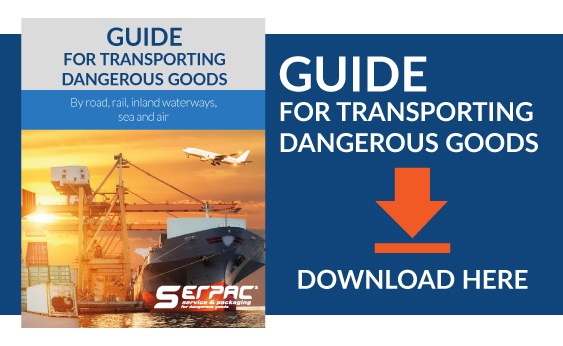Dangerous Goods labels: how to find one’s way around ADR hazard classes

When traveling by road, in the city, suburbs or on highways, one can encounter vehicles that are equipped with signs of different colors and symbols on the sides or on the back. Those signs almost always symbolize the transportation of hazardous goods.
But what do all these symbols mean? Every substance that, if not handled with care, can cause damage to oneself, the driver, the receiver, other objects or the environment. One can notice that the topic in question is quite delicate: an absent (or incorrect) signalization of the transported goods, can in fact be harmful towards human beings and the ecosystem.
Why are labels and placards important?
In order to protect the environment, it is inevitable to apply proper signs also to vehicles that transport dangerous goods. Hence, when talking about hazard labels, orange panels and placards they all have their specific functions. Looking at the transport of dangerous goods in tanks, the plates (with their symbols, formats and colors) which signal the presence of substances such as toxic gas, flammable liquids or corrosives, etc., are represented in the form of an orange, reflecting panel with numbers on it that state the danger. When transporting dangerous goods in packages, with some exceptions, the signalization is more generic. For those kinds of transports, blank orange panels are being used, without the UN numbers on it.
Keep in mind that not all labels are the same. Hence, the first and most important distinction is the mode of transport and the vehicles that are being used, which comply to a set of rules and norms, administered by the international ADR regulation, which is not only a European but a world-wide regulation to the transport of dangerous goods by road.
The ADR hazard classes
Dangerous goods labels are categorized into nine ADR hazard classes, which by themselves are split into sub-divisions and graphically represent the danger based on the characteristics of the goods. The design is predetermined by the ADR regulation and must be of a square set at an angle of 45° (diamond-shaped) with measurements of 10x10 cm, 25×25 cm or 30×30 cm depending on the package size, the size of the vehicle or the part it is attached to.
Class 1
Explosive substances and objects, also the ones that only represent a minor danger, which, in case of combustion, may explode during the transport.
Class 2
This class is split into subdivisions:
- class 2.1: Flammable gas
- class 2.2: Non-flammable, non-toxic gas
- class 2.3: Toxic gas
Class 3
Flammable liquid
Class 4
This class is split into subdivisions:
- class 4.1: Flammable solid, self-reactive matter, decomposes explosively or produces toxic gases
- class 4.2: Spontaneously combustible matter
- class 4.3: Matter that is dangerous when wet
Class 5
This class is split into subdivisions:
- class 5.1: Oxidizer
- class 5.2: Organic peroxide
Class 6
This class is split into subdivisions:
- class 6.1: Toxic substances
- class 6.2: Infectious substances
Class 7
Radioactive material
Class 8
Corrosive material
Class 9
Miscellaneous objects and substances
Orange panels
To correctly label dangerous goods as requested by ADR regulations, particular panels and placards have to be attached. Amongst those are the so-called reflecting orange panels. There are two kinds of orange panels: the ones with numbers and the ones without numbers (also called blank panels). In the case of panels with numbers, the common dimension is 40x30 cm. The number in the upper division signalizes the type of danger and the number in the lower division the substance that is being transported.
Upper part
The first number on the left represents the principle type of danger based on the characteristics of the goods and the second number stands for the secondary danger (the number zero is added after the first number only when a subsidiary risk does not exist). It is also possible that a third number represents another subsidiary danger. In case that one and the same number is double it indicates an intensified risk. If an X follows a number, it means that the transported substance interacts dangerously when in contact with water, which is a vital and life-saving information for fire fighters or personal that intervenes in case of an accident.
Lower part
On the lower part of the orange panel is indicated the code pertaining to the substance; its technical name is UN Number: composed of four letters, each number corresponds to a specific dangerous substance.
